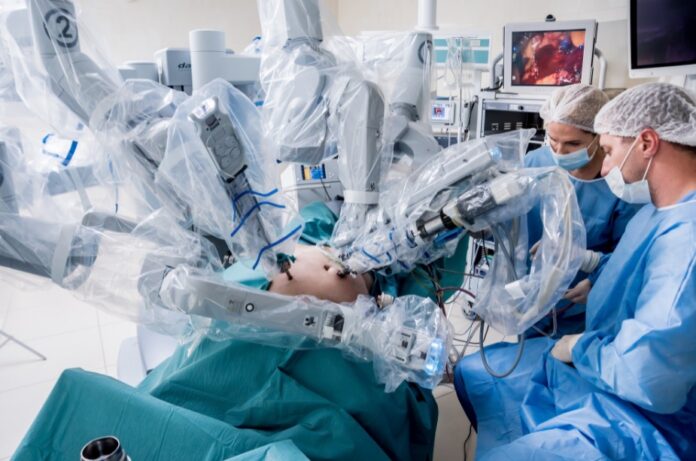
With the growing interest in robotic surgery and its promising results, the demand for structured guidance on setting up hospital robotic programs is rising. The journey from concept to execution involves multiple critical phases that ensure the program’s sustainability and success.
The use of robots has grown exponentially, with the global market expanding from less than $5 billion in 2000 to an estimated $25 billion in 2010. Robotic technology offers unique opportunities to control operational processes remotely, enabling skilled operators to perform tasks without being physically present. More importantly, robots can execute precise, controlled, and fatigue-free actions, making complex procedures safer and more reliable.
Historically, robotic technology was predominantly used in manufacturing. However, its applications have broadened significantly, including personal-use machines and, more recently, medical fields. This shift highlights the transformative potential of robotics in healthcare, where precision and reliability are paramount.
The concept of surgical robotics dates back to the late 1980s when the National Aeronautics and Space Administration (NASA), in collaboration with the Stanford Research Institute, integrated virtual reality with robotic systems to pioneer telepresence surgery. The commercialization of robotic surgery began in the early 1990s, with the Zeus and da Vinci robotic systems introduced in the late 1990s. Today, the da Vinci system, approved by the FDA for general surgery in 2000, urology in 2001, and gynecology in 2005, remains the only commercially available telerobotic system. These advancements underscore robotic systems’ rapid evolution and growing significance in medicine.
Let’s have a unique and fresh perspective on setting up a successful robotic program at your hospital.
Phase 1: Developing a Strategic Business Plan
Every successful robotic program begins with a robust business plan. This involves defining the program’s scope, goals, and target outcomes. Key considerations include:
- Securing administrative support for operational sustainability.
- Identifying potential revenue streams and cost-saving measures.
- Assessing the market demand and aligning it with organizational goals.
The business plan should also include a roadmap for funding, covering the purchase of a robotic system, staffing, and marketing efforts. Strategic clarity at this stage lays the foundation for a program that can thrive in a competitive healthcare environment.
Phase 2: Implementation and Infrastructure Setup
This phase involves translating the business plan into actionable steps. Critical elements include:
- Theatre Design: Optimizing the surgical suite for robotic systems, ensuring seamless equipment integration.
- Equipment Acquisition: Procuring the appropriate robotic system tailored to the institution’s needs and specialties.
- Sterilization Facilities: Establishing robust sterilization protocols to maintain equipment longevity and ensure patient safety.
- Theatre Team: Assembling a dedicated team of anesthetists, nurses, and support staff trained in robotic procedures.
- Marketing Strategy: Creating awareness about the program to attract patients and referring physicians.
- Expert Leadership: Appointing an experienced lead surgeon to champion the program and provide mentorship.
Phase 3: Program Execution
Execution is where planning meets action. This phase focuses on delivering robotic surgeries efficiently while maintaining high clinical standards. Coordination among the theatre team and the ability to troubleshoot technical issues during procedures are critical. Patient experience, including pre-and post-operative care, must be prioritized to establish credibility.
Phase 4: Maintenance and Continuous Improvement
A robotic program requires ongoing effort to ensure quality, efficiency, and patient satisfaction. Key focus areas include:
- Data Systems: Implementing robust systems to monitor quality control, efficiency, and clinical outcomes.
- Training Programs: Establishing structured education for fellows, residents, and the theatre team to keep up with advancements in robotic surgery.
- Feedback Mechanisms: Incorporating patient feedback into operational improvements.
This phase is crucial for maintaining program excellence and building a reputation for high-quality care.
Phase 5: Growth and Expansion
Once the program achieves stability, the focus shifts to scaling operations. Strategies for growth include:
- Recruiting Surgeons: Expanding the surgical team to meet increasing demand.
- Cross-Specialty Collaboration: Partnering with other specialties to broaden the scope of robotic surgeries offered.
- Expanding Case Volume: Increasing the caseload to achieve profitability without compromising quality.
Growth ensures the program’s long-term viability while extending its benefits to a more extensive patient base.
Unique Challenges and Regional Considerations
While the above phases provide a universal framework, regional variations in healthcare and insurance systems can pose unique challenges. For instance:
- USA: Programs often hinge on substantial increases in caseload to achieve profitability, particularly when transitioning from high-volume laparoscopic procedures.
- Europe: Healthcare and insurance systems vary significantly, requiring tailored approaches for each country.
- UK: Adopting robotic surgery involves navigating specific national policies and funding mechanisms.
Understanding these regional nuances is key to customizing the robotic program for maximum impact.
Conclusion
Setting up a robotic program at your hospital is a complex, multi-phase process that requires careful planning, execution, and continuous improvement. From a strategic business plan to growth-focused initiatives, each phase contributes to building a sustainable and impactful program. With the rapid advancements in robotic technology, including the da Vinci system, the potential for precision, safety, and innovation in healthcare has never been more significant. While challenges may vary by region, the core principles remain universally applicable. With the proper infrastructure, dedicated teams, and visionary leadership, a robotic program can revolutionize surgical care and deliver outstanding patient outcomes.





















